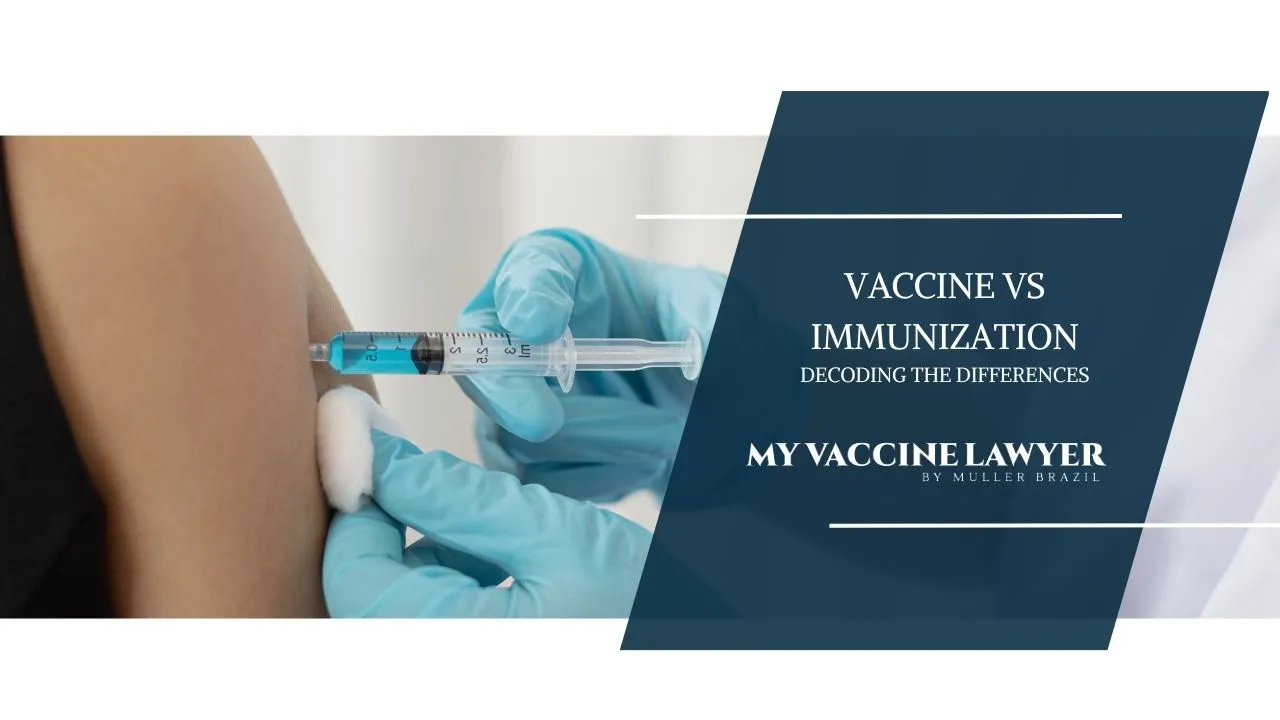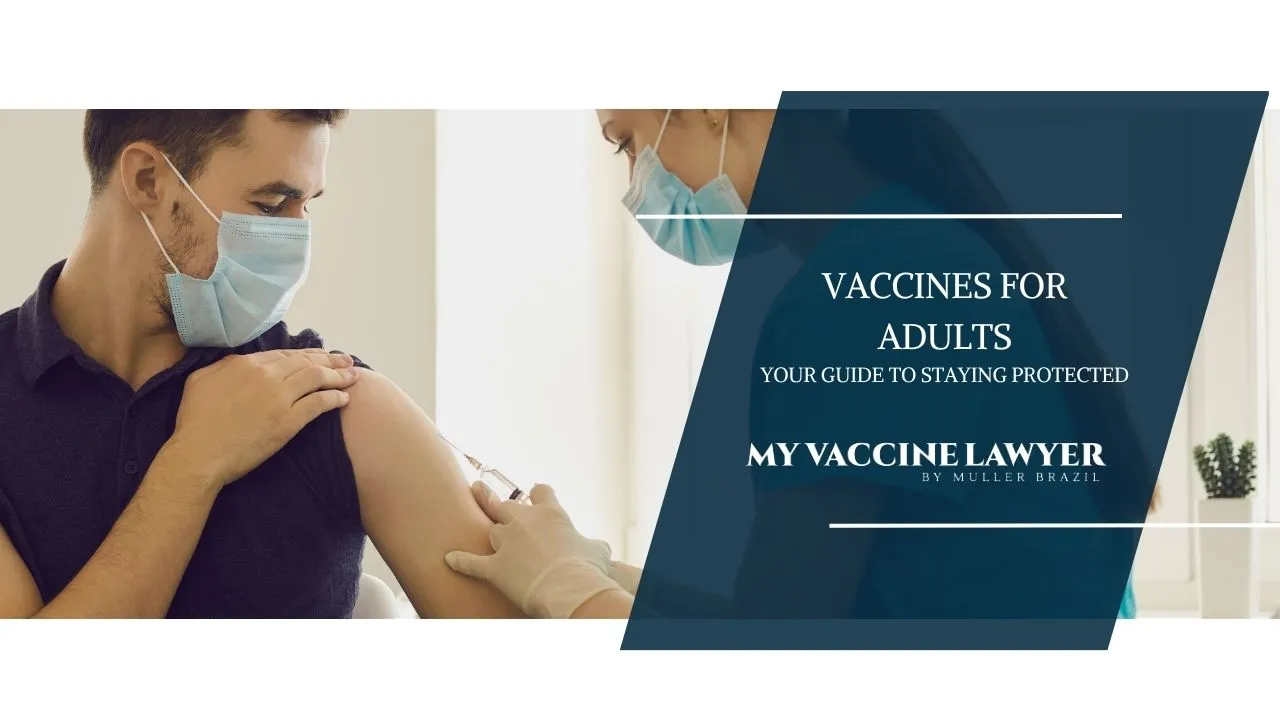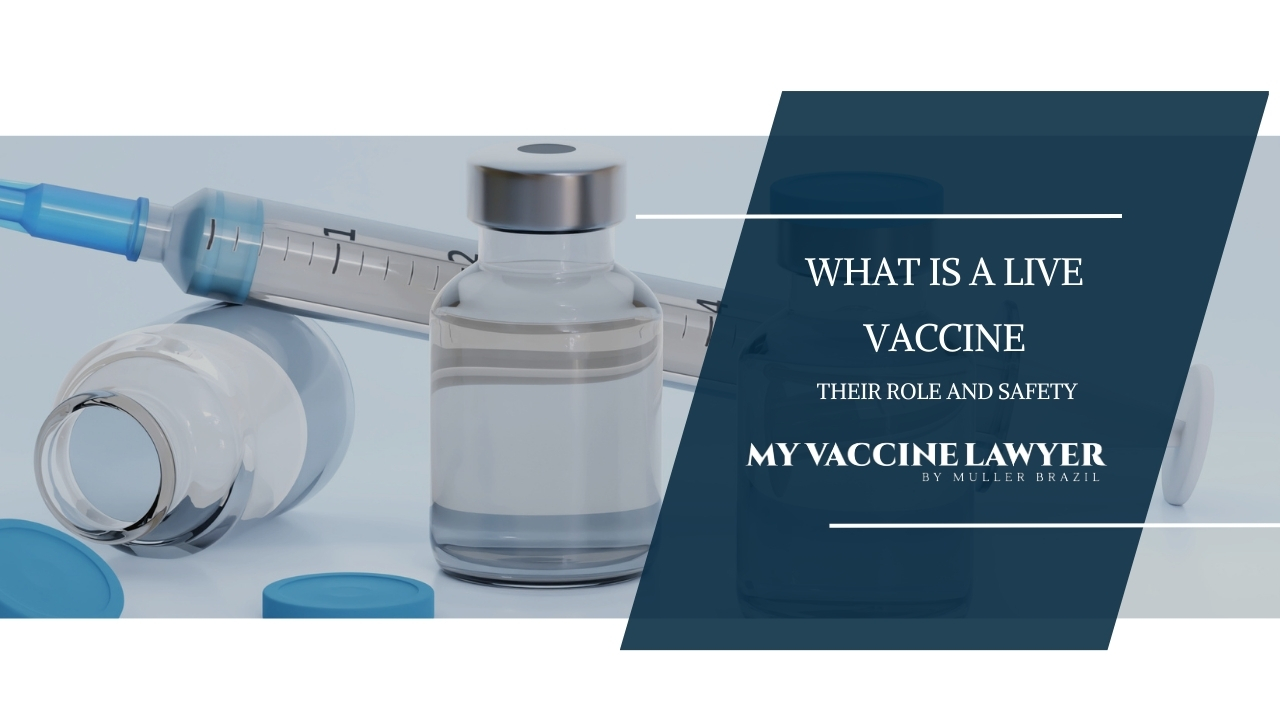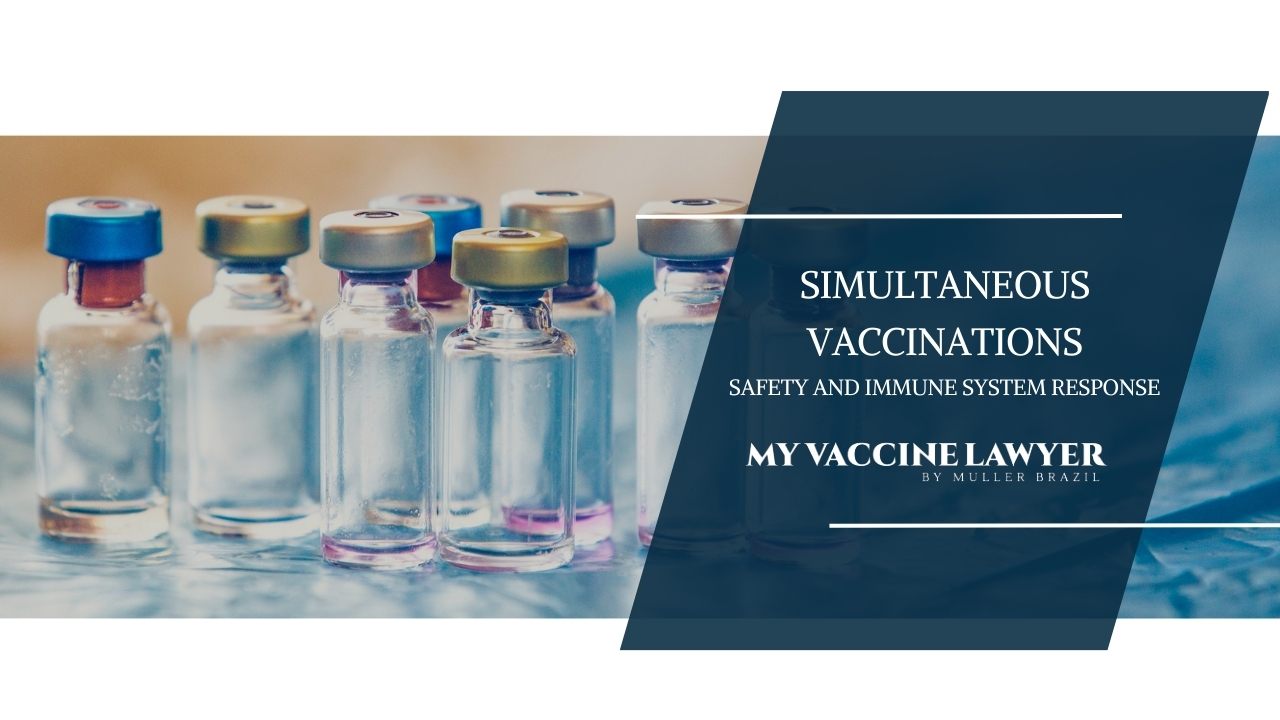9 min read
Live Vaccines: Essentials and Safety Overview
Vaccine Injury Law Resources / Vaccines / Live Vaccines: Essentials and Safety Overview
 Max Muller
:
Feb 1, 2024 12:00:00 PM
Max Muller
:
Feb 1, 2024 12:00:00 PM
Live vaccines are important tools in preventing about 4 million deaths globally each year, as reported by the CDC. These vaccines use a weakened form of a virus to safely trigger a strong immune response, protecting against diseases like measles, mumps, and rubella without causing the illness itself. This guide will explore how live vaccines work, their benefits, and the importance of managing vaccination schedules properly.
We'll explain the basics of live attenuated vaccines, highlight their advantages, and discuss how they activate the immune system. Additionally, we'll address common misconceptions and explain how to schedule live vaccines with other immunizations effectively. This information is necessary for anyone looking to understand the role of live vaccines in public health and their significant impact on disease prevention.
Key Takeaways
- Live attenuated vaccines are weakened forms of a pathogen that stimulate an immune response without causing illness.
- Live vaccine administration must consider timing and interactions to guarantee maximum benefit, while addressing myths and misconceptions about safety is essential for gaining public trust.
- mRNA and viral vector vaccines mark the beginning of a new era in vaccine development using genetic material to prompt immunity with reduced risk of inducing disease.
Demystifying Live Attenuated Vaccines
When discussing live vaccines, may may come across the term “live attenuated vaccines.” These attenuated virus vaccines employ a weakened form of the pathogen to produce a strong and enduring immune response. A live attenuated vaccine is a live, attenuated virus that closely replicates natural infection without inducing the disease. It’s like training your immune system for a battle, using a harmless mock enemy.
The immune system gets ‘educated’ when live vaccines introduce a weakened virus that stimulates a protective response without causing illness. This training allows the immune system to identify and combat the particular pathogen in the event of encountering the real version, thereby avoiding future infections.
The Science Behind Attenuation
Exploring the science behind attenuation reveals the process of reducing the pathogenicity of a microorganism while maintaining its ability to stimulate an immune response - a key aspect in developing live vaccines.
Various techniques are used to weaken a virus for use in vaccines. These include growing the virus in a new environment or genetically modifying it to lessen its ability to cause disease. These methods aim to maintain the virus's ability to stimulate an immune response while reducing its potential harm. However, there are concerns about the virus reverting to a more harmful form or mutating to a more virulent strain that could cause disease.
Advantages of Live-Attenuated Immunization
Live attenuated vaccines have a few big advantages when it comes to immunization. Some of these include:
- Live attenuated vaccines have a potent immune response
- They present the pathogen’s antigen in a harmless manner
- This results in a more durable and vigorous immunity when compared to inactivated vaccines
Another advantage of live attenuated vaccines is that a lifetime of protection against the disease can often be achieved with just 1 or 2 doses. Furthermore, live vaccines provide benefits such as:
- Higher immunization rates, possibly attributed to the stronger immune response
- Reduced number of doses needed, improving convenience
- Improved likelihood of individuals completing the vaccination series
Safety Profile and Considerations
Though generally safe, live vaccines do carry certain considerations. Certain conditions may pose risks. For example, live vaccines may present risks for specific populations, such as immunocompromised individuals, and require appropriate storage and handling.
The storage and handling processes can significantly impact the safety of live vaccines, as they are sensitive to temperature changes. Inadequate storage can result in reduced potency and effectiveness. It is crucial to store vaccines within the recommended temperature range to preserve their stability and efficacy. Live vaccines need to be stored and handled carefully to maintain their integrity.
Unpacking the Immune Response to Live Vaccines
Live vaccines activate the immune system by mimicking a natural infection, producing antibodies and memory cells for long-term protection.
This natural emulation is achieved by introducing a weakened or attenuated form of the pathogen into the body. This allows the vaccine to replicate and provoke an immune response similar to what would take place during a natural infection. The result is a strong and thorough immune response, as the immune system adapts to identify and fight the pathogen.
Get Help Today
Mechanisms of Immunity Activation
Immune response to live vaccines involves a combination of both innate and adaptive immune responses. The innate immune response is the body's first line of defense against pathogens. It includes physical barriers like skin and mucous membranes and immune cells like phagocytes and natural killer cells that respond immediately to foreign substances in the body.
The adaptive immune response, on the other hand, is more specific and takes longer to develop. It involves specialized cells like B and T lymphocytes that recognize specific antigens on the pathogen. These cells remember the pathogen, allowing for a quicker and more effective response if the body encounters the same pathogen in the future.
Duration and Memory of the Immune Response
Due to the stimulation of memory cells, the immune response to live vaccines is generally considered long-lasting. Memory cells play a crucial role in providing this long-lasting immunity. They are formed during the initial immune response to the vaccine and retain information about encountered pathogens or antigens.
Upon re-infection, these memory cells initiate a swift immune response, effectively preventing the establishment of the infection. Memory cells guarantee sustained protection against the targeted disease.
Real-World Applications of Live Vaccines
Transitioning from the lab to the real world, live vaccines have significantly impacted the prevention of various diseases, such as:
- Measles
- Mumps
- Rubella
- Oral polio vaccine
Live vaccines have a significant historical presence in disease prevention and are widely acknowledged as one of the most successful preventive measures in the medical field. Their effectiveness in preventing viral diseases has been well-established for decades.
Common Live Vaccines and Their Targets
Live vaccines, also known as live virus vaccines, commonly target viral infections such as:
- measles
- mumps
- rubella
- varicella
- influenza vaccine
They also target some bacterial infections like tuberculosis.
These live vaccines, including the measles, mumps, and rubella (MMR) vaccine and the acellular pertussis vaccine, work by delivering live attenuated versions of the viruses. This induces antibody and cellular immune responses that mature over time, providing long-lasting immunity.
In contrast, conjugate vaccines and subunit vaccines work differently to achieve a similar goal.
Success Stories in Disease Eradication
Live vaccines have played a crucial role in some impressive success stories in disease eradication. For instance, smallpox and rinderpest have been eradicated thanks to live vaccines.
Live vaccines and toxoid vaccines have significantly controlled or eradicated diseases such as:
- Polio
- Tetanus
- Influenza (Flu)
- Hepatitis B (hepatitis B vaccine)
- Hepatitis A
- Rubella
These triumphs in the battle against disease underscore the power of live vaccines.
Comparing Live vs. Other Vaccine Types
In several ways, live vaccines set themselves apart from other vaccine types. For instance, while non-live vaccines include whole or fractional vaccines created by inactivating the microbe or using genetic technologies, live vaccines use a weakened form of the pathogen.
Moreover, live vaccines produce a natural immune response by using a weakened form of the virus, whereas inactivated vaccines consist of pathogens that have been rendered non-replicating through heat or chemical treatment, while still being recognizable by the immune system.
Live Attenuated vs. Inactivated Vaccines
Comparing live attenuated vaccines with inactivated vaccines reveals key differences. Inactivated vaccines use a dead version of the germ that causes a disease. They don't usually give as strong protection as live vaccines.
Furthermore, in the case of inactivated vaccines, it may be necessary to administer multiple doses over time, referred to as booster shots, to make sure of sustained immunity.
mRNA and Viral Vector Vaccines: A New Era
mRNA and viral vector vaccines mark the dawn of a new era in vaccine development. These innovative vaccines use genetic material to provoke an immune response while minimizing the risk of inducing disease.
Dan Barouch, MD, PhD, Director of the Center for Virology and Vaccine Research at Harvard Medical School, stated, "Both of these platforms have now been proven to be used in a real-world setting to combat a [viral] threat. These are no longer academic questions. We will see a lot more mRNA and vector vaccines because of it".
mRNA vaccines deliver genetic instructions to cells, prompting the production of a specific protein that produces an immune response, while viral vector vaccines use a benign virus to introduce genetic material into cells, leading to the production of the protein and the activation of the immune system.
Addressing Myths and Misconceptions
Misconceptions can cloud the understanding of vaccines. Several common misconceptions surrounding live vaccines include:
- vaccines contain harmful ingredients
- cause autism
- cause the diseases they are meant to prevent
For generating public trust in vaccines, addressing these misconceptions is vital. This involves debunking myths with accurate information and emphasizing the rigorous scientific research and testing that underpin vaccine safety and effectiveness.
To debunk these myths, it's important to look at the scientific studies and statistics.
- The myth that vaccines contain harmful ingredients has been refuted by numerous studies. For instance, a 2014 study published in the journal Vaccine found that the small amounts of additives in vaccines, such as aluminum salts and formaldehyde, are safe and increase the vaccine's effectiveness (Source: "Safety of vaccine adjuvants: Focus on autoimmunity." Vaccine, 2014).
- The claim that vaccines cause autism has been thoroughly debunked by extensive research. A 2019 study published in the Annals of Internal Medicine, which included over 650,000 children, found no increased risk of autism associated with the MMR vaccine (Source: "Measles, Mumps, Rubella Vaccination, and Autism: A Nationwide Cohort Study." Annals of Internal Medicine, 2019).
- The idea that vaccines cause the diseases they are meant to prevent is also unfounded. The CDC reports that the weakened viruses used in live vaccines might cause mild signs and symptoms but do not cause the severe diseases they are designed to prevent.
In conclusion, the rigorous scientific research and vast body of evidence support the safety and effectiveness of vaccines, helping to debunk the common myths and misconceptions.
In the rare instances of adverse events from live vaccines, trustworthy help from My Vaccine Lawyer is available to assist those affected.
Take Control of Your Injury Today
Debunking Myths About Vaccine Safety
Many misconceptions about vaccine safety stem from misinformation and misunderstanding. For instance, vaccines undergo thorough testing for safety and efficacy, starting with in vitro tests, followed by animal studies, and then clinical trials involving human participants.
Moreover, vaccines are continuously monitored for potential side effects through surveillance systems like the Vaccine Adverse Event Reporting System (VAERS). This system plays a crucial role in making sure of the ongoing safety of vaccines post-approval, by collecting and analyzing data on adverse events that may occur once the vaccine is administered to the public.
Transparency on Side Effects and Risks
Transparency is a key ingredient in building trust. Transparency concerning potential side effects and risks plays an important role in building trust and understanding among the public. Generally, this helps promote informed decision-making about vaccination.
Typical adverse effects of live attenuated vaccines often include:
- Pain, discoloration, or swelling at the injection site
- Tiredness
- Headaches
- Muscle pain
- Chills
- Fever
- Nausea
- Constitutional symptoms, with fever and rash occasionally manifesting
If these symptoms worsen or persist, seeking immediate medical attention is crucial. In the event of severe adverse reactions, consulting with a legal expert like My Vaccine Lawyer is also beneficial to understand your rights and potential compensations.
Navigating the Immunization Schedule
Managing the immunization schedule for live vaccines involves considering various factors, such as:
- simultaneous administration
- spacing between doses
- potential interactions with other vaccines or medications
An essential part of this journey is the timing and intervals for administering live vaccines. Live vaccines should be administered with a minimum interval of 4 weeks from other live vaccines or from injectable or nasally administered vaccines.
Timing of Live Vaccine Administration
The timing of live vaccine administration is important to achieve the desired immune response. For example, the MMR vaccine, which protects against measles, mumps, and rubella, is typically given in two doses. The first dose is usually given at 12-15 months of age, and the second dose is administered at 4-6 years of age.
However, in some cases, there may be a need for an accelerated schedule, such as impending international travel, or for individuals who are behind on their vaccination schedule and in need of rapid protection. In these situations, the second dose of MMR can be given as soon as 28 days after the first dose.
Call Us Now
Coordinating Live Vaccines with Other Immunizations
Coordinating live vaccines with other immunizations is a critical part of the process. For instance, if a patient is scheduled to receive both the MMR (measles, mumps, rubella) vaccine and the varicella (chickenpox) vaccine on the same day, these live vaccines can be administered without any issue.
The MMR vaccine might be given in the left arm and the varicella vaccine in the right arm. This makes sure they are administered at different anatomic sites and not mixed in the same syringe.
Summary
In our exploration of live vaccines, we’ve looked through the science behind attenuation, the mechanisms of immunity activation, and the real-world applications of these vaccines. We’ve debunked myths and misconceptions and explored the importance of a well-planned immunization schedule.
Understanding the power and potential of live vaccines is crucial for making informed decisions. The power and potential of legal recourse are also crucial in the event of unexpected adverse reactions. Please feel free to contact My Vaccine Lawyer if you suspect an unwelcome effect to a vaccine.
Frequently Asked Questions
What is considered a live vaccine?
Live vaccines contain whole, weakened bacteria or viruses, which create a protective immune response and do not cause disease in healthy people. These vaccines come from wild viruses or bacteria that have been weakened in a laboratory, resulting in a strong and long-lasting immune response.
What is the difference between killed and live vaccines?
Live virus vaccines contain weakened forms of the virus and produce a response that closely resembles natural infection, with both humoral and cell-mediated immunity. Inactivated vaccines, on the other hand, use killed versions of the germ and induce mostly an antibody response with little or no cell-mediated immunity.
Other types are recombinant vaccines that don't contain live pathogens and cannot cause even a mild form of the disease. Examples include the hepatitis B vaccine and the human papillomavirus (HPV) vaccine.
Is the rabies vaccine live or killed?
The rabies vaccine is made from killed rabies virus and does not pose a risk of causing rabies. It is recommended for those at high risk of exposure, such as veterinarians, animal handlers, and laboratory workers.
Is the shingles vaccine a live virus?
The shingles vaccine contains a weakened live virus (Zostavax) or a non-living virus component (Shingrix). It is typically administered in one or two doses, with common side effects including redness, pain, tenderness, swelling, and itching at the injection site.
Which vaccines are live?
Live, attenuated vaccines that are currently recommended in the US include MMR, varicella, rotavirus, and influenza (intranasal). Other non-routinely recommended live vaccines include the adenovirus, typhoid, and Bacille Calmette-Guerin (BCG).
Meet the Author
Max Muller - Founding Partner
Mr. Muller currently devotes the majority of his law practice to aggressively fighting for the victims of unsafe drug and medical device injuries, as well as vaccine injuries and vaccine reactions involving the flu shot, TDaP/DTaP vaccine, and more. He has handled hundreds of SIRVA injury cases (shoulder injury related to vaccine administration), especially those involving bursitis, tendonitis, frozen shoulder, and rotator cuff tears. Mr. Muller also handles cases where vaccines caused serious nerve injuries such as Guillain-Barre Syndrome. Mr. Muller has recovered millions of dollars in compensation for his clients in the Vaccine Injury Compensation Program.
Other posts by Max Muller

Vaccine vs. Immunization: Key Differences Explained
Vaccines provide the blueprints for our immune systems to combat diseases effectively. Immunization, evidence of the success of these vaccines, is...

Essential Adult Vaccines: A Comprehensive Protection Guide
Vaccines prevent more than 2.5 million deaths in the United States each year. Despite this staggering statistic, understanding adult vaccinations can...



